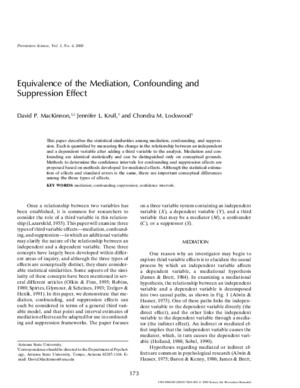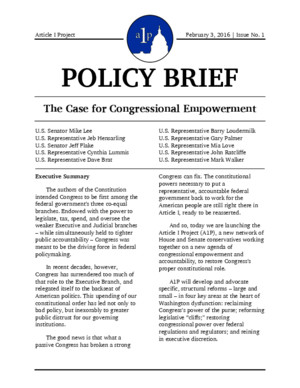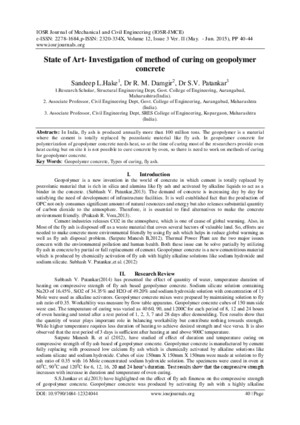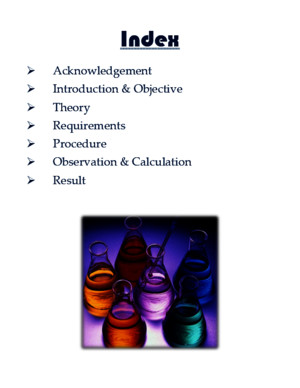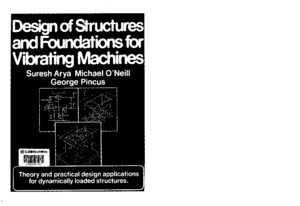Equivalence of the Mediation, Confounding and Suppression Effect
There is document - Equivalence of the Mediation, Confounding and Suppression Effect available here for reading and downloading. Use the download button below or simple online reader.
The file extension - PDF and ranks to the Instruction manuals category.
Tags
Related
Comments
Log in to leave a message!
Description
Download Equivalence of the Mediation, Confounding and Suppression Effect
Transcripts
Pre v ention Science, Vol 1, No 4, 2000 Equivalence of the Mediation, Confounding andSuppression Effect David P MacKinnon, 1,2 Jennifer L Krull, 1 and Chondra M Lockwood 1 This paper describes the statistical similarities among mediation, confounding, and suppres-sion Each is quantified by measuring the change in the relationship between an independentand a dependent variable after adding a third variable to the analysis Mediation and con-founding are identical statistically and can be distinguished only on conceptual groundsMethods to determine the confidence intervals for confounding and suppression effects areproposed based on methods developed for mediated effects Although the statistical estima-tion of effects and standard errors is the same, there are important conceptual differencesamong the three types of effects KEY WORDS: mediation; confounding; suppression; confidence intervals Once a relationship between two variables hasbeen established, it is common for researchers toconsider the role of a third variable in this relation-ship(Lazarsfeld,1955)Thispaperwillexaminethreetypesof thirdvariable effects—mediation, confound-ing,andsuppression—inwhichanadditionalvariablemay clarify the nature of the relationship between anindependent and a dependent variable These threeconcepts have largely been developed within differ-ent areas of inquiry, and although the three types of effects are conceptually distinct, they share consider-able statistical similarities Some aspects of the simi-larity of these concepts have been mentioned in sev-eral different articles (Olkin Finn, 1995; Robins,1989; Spirtes, Glymour, Scheines, 1993; Tzelgov Henik, 1991) In this paper, we demonstrate that me-diation, confounding, and suppression effects caneach be considered in terms of a general third vari-able model, and that point and interval estimates of mediationeffectscanbeadaptedforuseinconfound-ing and suppression frameworks The paper focuses 1 Arizona State University 2 CorrespondenceshouldbedirectedtotheDepartmentofPsychol-ogy, Arizona State University, Tempe, Arizona 85287-1104 E-mail: DavidMackinnonasuedu 173 1389-4986/00/1200-01731800/1 © 2000 Society for Prevention Research on a three variable system containing an independentvariable ( X ), a dependent variable ( Y ), and a thirdvariable that may be a mediator ( M ), a confounder( C ), or a suppressor ( S ) MEDIATION One reason why an investigator may begin toexplorethirdvariableeffectsistoelucidatethecausalprocess by which an independent variable affectsa dependent variable, a mediational hypothesis(James Brett, 1984) In examining a mediationalhypothesis, the relationship between an independentvariable and a dependent variable is decomposedinto two causal paths, as shown in Fig 1 (Alwin Hauser, 1975) One of these paths links the indepen-dent variable to the dependent variable directly (thedirect effect), and the other links the independentvariable to the dependent variable through a media-tor (the indirect effect) An indirect or mediated ef-fect implies that the independent variable causes themediator, which, in turn causes the dependent vari-able (Holland, 1988; Sobel, 1990)Hypotheses regarding mediated or indirect ef-fectsare common in psychological research (Alwin Hauser, 1975; Baron Kenny, 1986; James Brett, 174 MacKinnon, Krull, and Lockwood Fig 1 A three-variable mediation model 1984) For example, intentions are believed to medi-ate the relationship between attitudes and behavior(Ajzen Fishbein, 1980) One new promising appli-cation of the mediational hypothesis involves theevaluation of randomized health interventions Theinterventions are designed to change constructs,whicharethought tobecausallyrelatedto thedepen-dent variable (Freedman, Graubard, Schatzkin,1992) Mediation analysis can help to identify thecritical components of interventions (MacKinnon Dwyer, 1993) For example, social norms have beenshowntomediatepreventionprogrameffectsondruguse (Hansen, 1992) CONFOUNDING The concept of a confounding variable has beendeveloped primarily in the context of the health sci-ences and epidemiological research 3 A confounderis a variable related to two factors of interest thatfalsely obscures or accentuates the relationship be-tween them (Meinert, 1986, p 285) In the case of a single confounder, adjustment for the confounderprovides an undistorted estimate of the relationshipbetween the independent and dependent variablesTheconfoundinghypothesissuggeststhatathirdvariable explains the relationship between an inde-pendent and dependent variable (Breslow Day,1980; Meinert, 1986; Robins, 1989; Susser, 1973) Un-like the mediational hypothesis, confounding does 3 Here we are not referring to confounding discussed in the analysisof variance for incomplete designs (see Winer, Brown, Michels,1991 and Kirk, 1995) not necessarily imply a causal relationship amongthe variables In fact, at least one definition of aconfounder effect specifically requires that the thirdvariable not be an ‘‘intermediate’’ variable, asmedia-tors are termed in epidemiological literature (Last,1988, p 29) For example, age may confound thepositiverelationshipbetweenannualincomeandcan-cer incidence in the United States Older individualsarelikely toearnmore moneythan youngerindividu-als who have not spent as much time in the workforce, and older individuals are also more likely toget cancer Income and cancer incidence are thusrelated through a common confounder, age Incomedoes not cause age, which then causes cancer IntermsofFig1,thisconfoundingmodelwouldreversethe direction of the arrow between the independentvariable and the third variable SUPPRESSION In confounding and mediational hypotheses, itis typically assumed that statistical adjustment fora third variable will reduce the magnitude of therelationshipbetweentheindependentanddependentvariablesInthemediationalcontext,therelationshipis reduced because the mediator explains part or allof the relationship because it is in the causal pathbetween the independent and dependent variablesIn confounding, the relationship is reduced becausethe third variable removes distortion due to the con-founding variable However, it is possible that thestatistical removal of a mediational or confoundingeffect could increase the magnitude of the relation-ship between the independent and dependent vari-able Such a change would indicate suppressionSuppression is a concept most often discussed inthe context of educational and psychological testing(Cohen Cohen, 1983; Horst, 1941; Lord Novick,1968; Velicer, 1978) Conger (1974, pp 36–37) pro-vides the most generally accepted definition of a sup-pressorvariable(TzelgovHenik,1991):‘‘avariablewhich increases the predictive validity of anothervariable (or set of variables) by its inclusion in aregression equation,’’ where predictive validity is as-sessed by the magnitude of the regression coefficientThus, a situation in which the magnitude of the rela-tionship between an independent variable and a de-pendent variable becomes larger when a third vari-ableisincludedwouldindicatesuppressionWefocusontheCongerdefinitionofsuppressionin thisarticle,although there are more detailed discussions of sup- Mediation and Confounding 175 pression based on the correlations among variables(see above references and also Hamilton, 1987;Sharpe Roberts, 1997) COMPARING MEDIATION, CONFOUNDING, AND SUPPRESSION Within a mediation model, a suppression effectwould be present when the direct and mediated ef-fects of an independent variable on a dependent vari-able have opposite signs (Cliff Earleywine, 1994;Tzelgov Henik, 1991) Such models are knownas inconsistent mediation models (Davis, 1985), ascontrastedwithconsistentmediationmodelsinwhichthe direct and mediated effects have the same signThe most commonly used method to test formediation effects assumes a consistent mediationmodeland doesnotallowforsuppression orinconsis-tent mediation This method involves three criteriafor determining mediation (Baron Kenny, 1986;Judd Kenny, 1981a):1 There must be a significant relationship be-tween the independent variable and the de-pendent variable,2 There must be a significant relationship be-tweentheindependentvariableandthemedi-ating variable, and3 The mediator must be a significant predictoroftheoutcomevariableinanequationinclud-ing both the mediator and the independentvariableMcFatter (1979) presented a hypothetical situa-tion inwhich an inconsistentmediation (suppression)effect is present, but which would not meet the firstcriterion for mediation listed above Suppose thata researcher is interested in the interrelationshipsamong workers’ intelligence ( X ), level of boredom( M ), and the number of errors made on an assemblyline task ( Y ) It can be plausibly argued that, allelse being equal, the more intelligent workers wouldmake fewer errors, the more intelligent workerswouldexhibithigherlevelsofboredom,andboredomwould be positively associated with number of errorsThus the direct effect of intelligence on errors wouldbe negative, and the indirect effect of intelligenceon errors mediated by boredom would be positiveCombined, these two hypothetical effects may canceleach other out, resulting in a total effect of intelli-gence on errors equal to zero This nonsignificantoverall relationship would fail to meet the first of thethree criteria specified above, leading to the errone-ous conclusion that mediation was not present inthis situation The possibility that mediation can existeven if there is not a significant relationship betweenthe independent and dependent variables was ac-knowledged by Judd and Kenny (1981b, p 207), butit is not considered in most applications of mediationanalysis using these criteria Granted, a scenario inwhich the direct and indirect effects entirely canceleach other out may be rare in practice, but morerealistic situations in which direct and indirect effectsof fairly similar magnitudes and opposite signs resultin a nonzero but nonsignificant overall relationshipare certainly possibleThe notion of suppression is also present in de-scriptions of confounding The classic example of asuppressor is a confounding hypothesis described byHorst (1941) involving the prediction of pilot perfor-mance from measures of mechanical and verbal abil-ity When the verbal ability predictor was added tothe regression of pilot performance on mechanicalability,theeffectofmechanicalabilityincreasedThisincrease in the magnitude of the effect of mechanicalability on pilot performance occurred because verbalabilityexplainedvariabilityinmechanicalability;thatis, the test of mechanical ability required verbal skillsto read the test directionsBreslow and Day (1980, p 95) noted this distinc-tion between situations in which the addition of aconfounding variable to a regression equation re-duces the association between an independent and adependent variable and those suppression contextsin which the addition increases the association Theyterm the former ‘‘positive confounding’’ and the lat-ter ‘‘negative confounding’’ Although defined intermsofepidemiological concepts,positiveandnega-tive confounding are analogous to consistent and in-consistent mediation effects, respectively POINT ESTIMATORS OF THE THIRDVARIABLE EFFECTS Methods of assessing third variable effects in-volve comparing the effect of X on Y in two models,one predicting Y from only the X variable, the otherpredicting Y from both X and the third variable Thethird variable effect (ie, the mediated, confounding,or suppression effect) is the difference between thetwo estimates of the relationship between the inde-pendent variable X and the dependent variable Y In the discussion below, the general model is de-
Recommended

